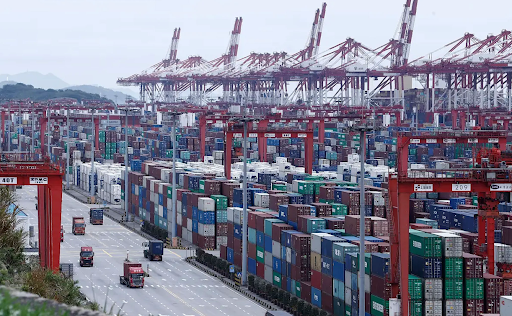
09/06/2022

The first container was patented in 1956 by Mr. Malcolm McLean, the owner of one of the largest trucking companies in the US. Not long after, the International Maritime Organization adopted this design as a standard for containers. In the decades that followed, the design of the containers hardly changed significantly. However, the recent supply chain crisis has forced major carriers and retailers to rethink how they ship goods.
.png)
Staxxon, a start-up in the US, is planning to sell containers that can be folded up to one-fifth the size of conventional 6m to 12m long containers. The company said it will start commercial production this year and allow buyers to pre-order at $100 per container. If Staxxon's container design is adopted by major carriers, it could mark the first major shift for containers in decades. Staxxon's folding container plan can save up to 57% in inland transportation costs, even if it incurs additional purchase costs to replace old containers. Despite incurring a higher annual maintenance fee, the foldable design would still be a more cost-effective option. Thus, in the same space, instead of an empty container taking up space, one can now fit 5 boxes.
The design of the containers did not change much in the following decades. On the other hand, recent supply chain problems have forced major carriers and retailers to rethink the way they ship goods. We've seen empty containers pile up in docks and warehouses over the past two years, congesting the shipping terminal system. Last year, Business Insider discovered nearly 110,000 empty containers at the port of Southern California, the country's busiest seaport. Not only that, the transportation of empty containers is also very expensive. According to Bloomberg, about 27% of 6-meter-sized containers transported through ports are empty containers, costing the entire industry $20 billion.
.png)
Accordingly, folding containers are evaluated as the solution in the current context. Mr.Shao Hung Goh, Lecturer in Logistics and Supply Chain at Singapore University of Social Sciences, said that carriers can save up to 57% in domestic transportation costs by using folding containers, right away. even at the expense of replacing traditional containers.
According to Mr. Richard Danderline, CFO of Staxxon, folding containers is the key for transport businesses and shippers to increase capacity, while solving the problem of port congestion, saving costs and protecting the environment. .
Staxxon isn't the only company looking to the future of folding containers. 4Fold, a Dutch company, says it is creating a container with a similar function, which could save up to 37% in costs and emissions. Or another Dutch company called Delft has also distributed folding containers to dozens of test shippers and carriers.
While congestion at Southern California ports has decreased in recent months, ports on the East Coast have tended to increase. On the other hand, cargo ports are all preparing for peak shipping demand before the fall. This is the time for retailers and shippers to work to recover from the impact of the two-year pandemic.
U&I Logistics